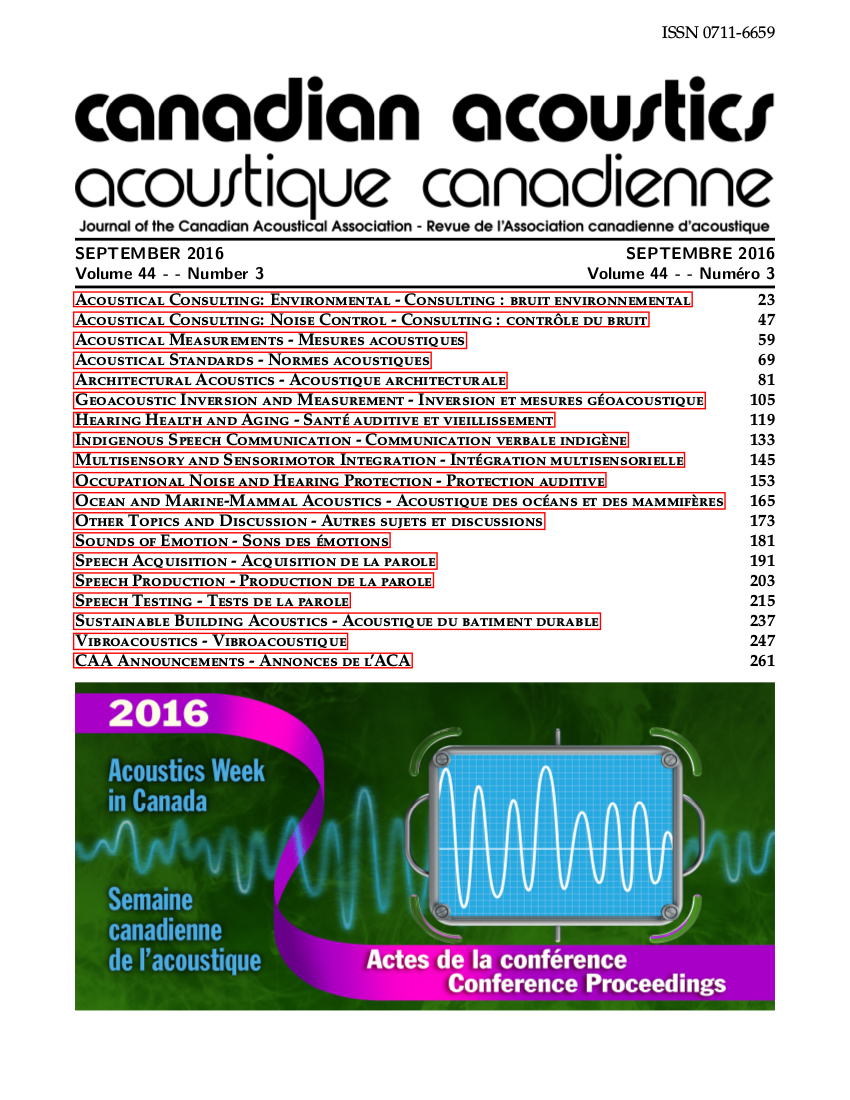Noise Levels from Heavily Travelled Roads for Use with Environmental Noise Regulations in British Columbia and Alberta
Résumé
Noise Impact Assessments (NIAs) for oil and gas facilities in British Columbia are typically conducted in accordance with the Noise Control Best Practices Guideline of the British Columbia Oil & Gas Commission (BC OGC). NIAs for industrial facilities in Alberta are typically conducted in accordance with Alberta Utilities Commission (AUC) Rule 012 or Alberta Energy Regulator (AER) Directive 038. The BC OGC Guideline, AUC Rule 012, and AER Directive 038 are very similar with respect to assessment methodology and compliance limits. All three documents require that noise be assessed cumulatively and, in particular, require that the contribution of heavily travelled roads be included when testing noise compliance for industrial facilities. All three documents endorse the same desktop technique for estimating A-weighted Ambient Sound Levels (ASLs) at various distances from heavily travelled roads. This paper compares ASL values estimated using the regulatory desktop technique and noise levels calculated using widely-accepted computer models of road traffic noise. Noise levels are compared for various receptor distances and various traffic levels. This paper uses modelled results to propose new ASL values for use in NIAs when traffic levels and/or receptor distances are not adequately addressed by the regulatory desktop technique.Fichiers supplémentaires
Publié-e
Comment citer
Numéro
Rubrique
Licence
Author Licensing Addendum
This Licensing Addendum ("Addendum") is entered into between the undersigned Author(s) and Canadian Acoustics journal published by the Canadian Acoustical Association (hereinafter referred to as the "Publisher"). The Author(s) and the Publisher agree as follows:
-
Retained Rights: The Author(s) retain(s) the following rights:
- The right to reproduce, distribute, and publicly display the Work on the Author's personal website or the website of the Author's institution.
- The right to use the Work in the Author's teaching activities and presentations.
- The right to include the Work in a compilation for the Author's personal use, not for sale.
-
Grant of License: The Author(s) grant(s) to the Publisher a worldwide exclusive license to publish, reproduce, distribute, and display the Work in Canadian Acoustics and any other formats and media deemed appropriate by the Publisher.
-
Attribution: The Publisher agrees to include proper attribution to the Author(s) in all publications and reproductions of the Work.
-
No Conflict: This Addendum is intended to be in harmony with, and not in conflict with, the terms and conditions of the original agreement entered into between the Author(s) and the Publisher.
-
Copyright Clause: Copyright on articles is held by the Author(s). The corresponding Author has the right to grant on behalf of all Authors and does grant on behalf of all Authors, a worldwide exclusive license to the Publisher and its licensees in perpetuity, in all forms, formats, and media (whether known now or created in the future), including but not limited to the rights to publish, reproduce, distribute, display, store, translate, create adaptations, reprints, include within collections, and create summaries, extracts, and/or abstracts of the Contribution.


